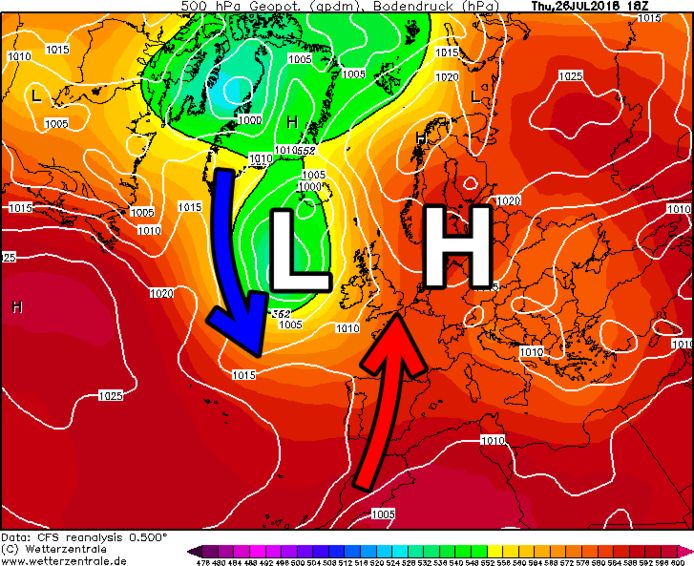Cold sea temperatures in the North Atlantic increase the risk of heatwaves in Europe New search In the scientific journal Tellus A: Dynamic Meteorology and Oceanography. German scientists analyzed sea water temperatures and their relationship to heat waves in Europe over a period of 40 years. In doing so, they revealed a strong link between these ocean conditions and air temperatures in Europe.
Scientists from the GEOMAR Helmholtz Center for Ocean Research in Kiel used observations and weather models to study the relationship between North Atlantic surface temperatures and heat waves in Europe during the period from 1979 to 2019. They reached a startling result: Seventeen European heat waves were preceded by a decrease in Sea water surface temperature. This finding may therefore show that lower water temperatures in the North Atlantic have a strong impact on air temperatures on the European mainland. But what could be the reason behind this?
Read more below the picture
When sea surface temperatures in the North Atlantic drop during the summer months, scientists say this enhances heat waves in western and central Europe. Colloquially, this is also called a “climate seesaw,” because cooling in one region leads to a warming in another.
Cold water in the North Atlantic contributes to the formation of strong low pressure areas of long extension. This brings warm southern air towards Europe in the upper atmosphere, contributing to the formation of a strong high pressure area over land, also known as the European Ridge. This creates the ideal conditions for a long, dry and clear period, which can lead to a heatwave in Western and Central Europe in the summer.
Read more below the picture

This pattern was strikingly clear in the summers of 2015 and 2018, when the North Atlantic was unusually cold and Europe was hit by heatwaves and drought. In both years, sea surface temperatures in the North Atlantic were about 2.5 degrees below average, shortly before the extreme heatwaves occurred. In some places in Europe, temperatures have already risen four degrees above the long-term average before the heatwave officially begins.
The study results contribute to understanding the physical relationship between North Atlantic surface temperature and European heat waves, which is also crucial to improving weather forecasting in a changing future climate. The authors state that more research is needed to confirm the discovered connection.
Scientists see a noticeable increase in large hailstones in Europe: “This region is a hotspot for strong thunderstorms and brutal hail” (+)
How can it still be so cold and snowy in a warm climate? Climate scientist explains (+)
Sea level rise could cost Europe up to 872 billion euros: should our country fear economic disaster? (+)
Free unlimited access to Showbytes? Which can!
Log in or create an account and never miss a thing from the stars.
